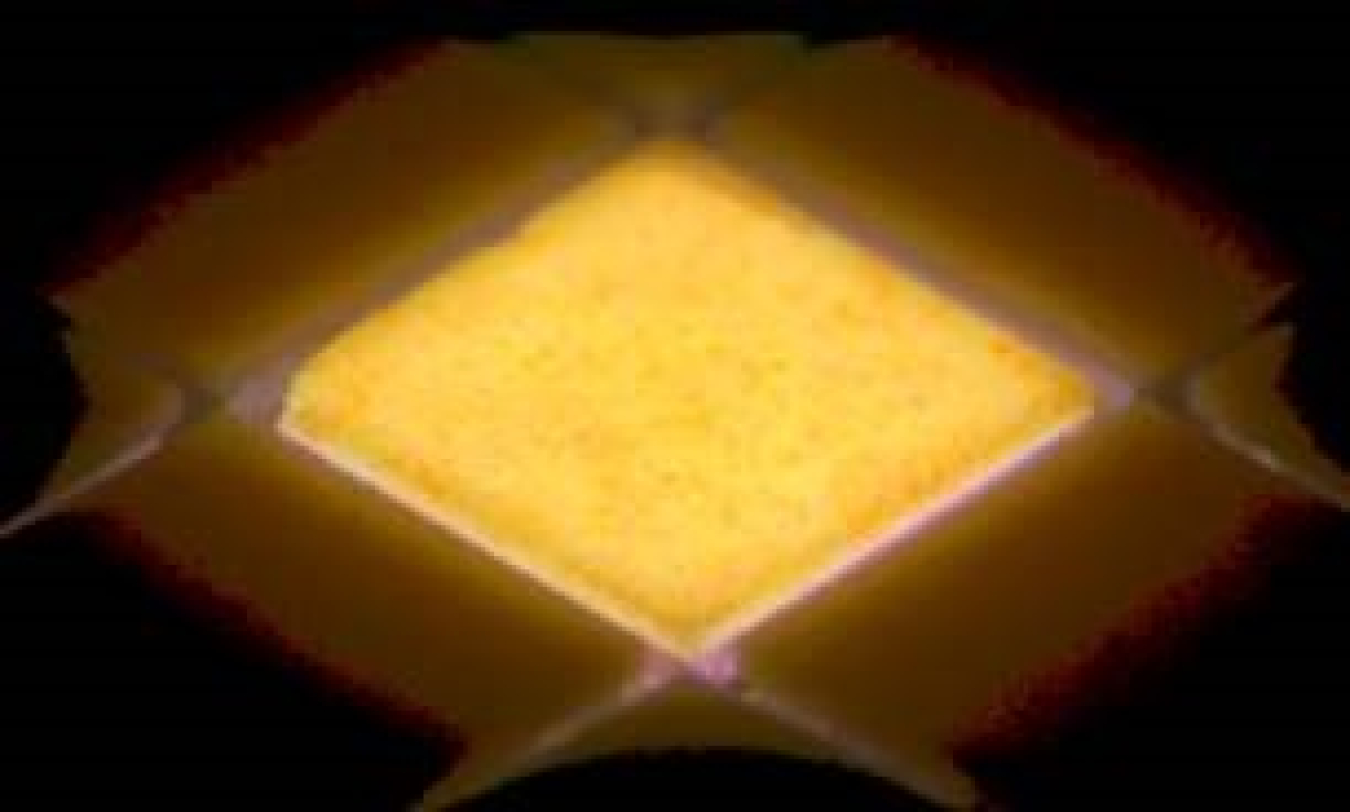
Prototype high-luminance LEDs in dense array, with center LED lit up.
With the help of DOE funding, researchers at Lumileds are working to develop a high-luminance, high-efficacy LED platform for directional lighting applications. At present, efficacy in multi-emitter modules typically drops off rapidly as brightness is increased. This occurs because of efficiency droop and light-extraction tradeoffs at the LED package level and is exacerbated by packing-density limitations at the module level. It is important to have higher brightness in LED modules, since this enables not only improved optical control, but also energy savings resulting from getting a higher percentage of generated light onto the target. Lumileds has been working on all aspects of the chip, package, and module to improve efficacy at higher luminance, including LED growth epitaxy, phosphor, packaging materials, and module design.
The LED platform being developed will consist of a range of surface-emitting chip-scale packages based on a 1 mm2 die with minimal package size, to facilitate packing in dense arrays. The range includes white LEDs for fixed correlated color temperature (CCT) applications and a set of desaturated red, green, and blue color points for CCT-tunable applications. The project will demonstrate improved efficacy at both the LED level and the module level. At the LED level, the efficacy target is 120 lm/W at a luminous emittance of 150 lm/mm2 and junction temperature of 85°C, for a CCT of 4000K and CRI >80. At the module level, the efficacy targets are 128 lm/W for a fixed CCT module having CCT of 4000K and CRI >80, and 105 lm/W for a CCT tunable module having CRI >90 over a CCT range from 2700K to 6500K, both evaluated at a module emittance of 80 lm/mm2 and junction temperature of 85°C.
A new epitaxy-growth process with improved internal quantum efficiency (IQE), together with other efficiency improvements in the package, has so far enabled a module-level performance of 113 lm/W at 80 lm/mm2, exceeding the intermediate milestone target of 105 lm/W. Further efficacy gains toward the 128 lm/W target will mainly come from packing-density improvements. The researchers have fabricated prototypes of a new package design that has ~40% smaller area vs. the baseline, allowing higher efficacy to be achieved at the same module emittance. (September 2020)
Return to Research Highlights.

